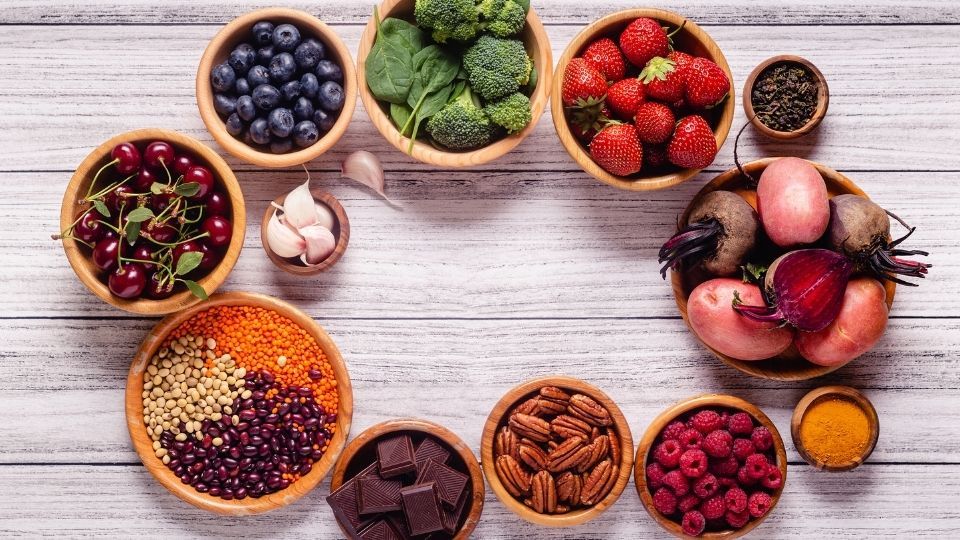Typhoid Fever Treatment and Food
A severe infectious disease, typhoid, is caused by a bacteria called Salmonella. When an individual consumes water or food that is contaminated with this bacteria, the body succumbs to typhoid. This serious ailment is majorly prevalent during the monsoon season.
Choosing easy to digest foods enriched with plenty of nutrients can help provide long-lasting energy while relieving gastrointestinal issues. Read further to know more about the typhoid fever diet that helps in recovery from typhoid.
Symptoms of Typhoid Include
· Constipation
· Chills and fever
· Headache
· Fatigue
· Diarrhea
At times the patient may experience additional symptoms like loss of appetite, nausea, and more.
Also Read: Thyroid & Hair Loss | Prevent Hair Loss due to Thyroid
How to Follow a Typhoid Diet?
Practising food hygiene is vital. Fibre-rich whole grains need to be replaced with refined grains. Drinks with ice are strictly prohibited. Any raw food item, be it vegetarian or non-vegetarian, needs to be avoided. Consumption of street food needs to be avoided completely.
Fluids, no matter in what form, are vital to keep dehydration at bay. Drinking water is one of the prerequisites of recovering quickly from typhoid. Drinking water should be filtered and boiled appropriately.
Typhoid Diet
Here are the food for typhoid that a person can include in their diet,
Cooked Vegetables: Vegetables are rich in nutrients like fibre, minerals, carbohydrates, and proteins. Therefore adding veggies like carrots, green beans, squash, potatoes, etc., can help the body recover from extreme weakness.
Fruits: Integrating plenty of fruits into the diet can help recover from body weakness. Fruits like melons, canned fruit, ripe bananas, and apples are easy to digest and provide energy to the body.
Proteins: Protein is required by the body to recover from major symptoms like fatigue. So, can we eat chicken during typhoid? Yes. Protein sources like chicken, tofu, eggs, turkey, fish, and ground meat are a few options.
Beverages: In addition to water, glucose water, fruit juice, coconut water, and lassi are among the best fluid diet options. Water-rich fruits like watermelon, peaches, grapefruits are ideal for maintaining the required level of fluids in the body.
Soups: Light on the stomach and full of nutrients, soups, when added to the diet of typhoid patients, can do wonders. Also, when it comes to keeping the typhoid diet monotony at bay, soups are believed to be the best. Vegetable soup, spinach soup, mushroom soup, chicken soup are some options.
Carbohydrates: Soft and light carbohydrates are easy to digest and should form a part of the diet of typhoid patients. Soft rice, porridge, and baked potatoes are a few ideal carbohydrates sources recommended to typhoid patients to help in recovery.
Dairy products: Consumption of dairy products like yoghurt, cheese, and milk is believed to be good. However, milk should be only low fat.
Food to Avoid
- Raw vegetables: Cauliflower, broccoli, cabbage, onions and kale are amongst those raw vegetables that a typhoid patient must avoid.
- Fruits: Certain fruits like dry fruit, raw berries, kiwi, and pineapple should not be a part of the typhoid diet as they are high in fibre and are not easily digestible.
- Whole grains: As mentioned, foods that contain high fibre must be avoided to help ease digestion. A few common high-fibre whole grains to be avoided include brown rice, quinoa, barley, buckwheat, couscous, and more.
- Seeds: Seeds like flax seeds, pumpkin seeds, and chia seeds need to be avoided while recovering from typhoid.
- Legumes: Kidney beans, chickpeas, black beans, and lentils should not be a part of the typhoid diet. They contain a high amount of protein, and hence it becomes difficult to digest them easily during the recovery process.
- Fatty foods: Foods that are high in fat are difficult to digest and must be avoided. Main fatty foods include baked goods, fried chicken, mozzarella sticks, onion rings, potato chips, etc. One must avoid nuts high in fats. They include walnuts, pistachios, almonds, and macadamia nuts.
Benefits of Typhoid Diet
Dietary changes cannot cure a severe disease like typhoid, but it does help in relieving the symptoms. A typhoid diet helps in reducing gastrointestinal discomforts since it is light on the stomach. It also helps replace lost electrolytes due to diarrhoea.
In fact, as per studies, diets low in fibre are associated with managing bowel issues.
Are there any side effects of following a typhoid diet?
No, there are no side effects of following the Typhoid diet.
Pro Tip - Do’s and Don’ts in Typhoid
How you follow your diet too plays a pivotal role.
Do’s
Semi-solid food is an answer to what we should eat in typhoid. Easy to digest, semi-solid food includes boiled potatoes, boiled rice, yoghurt, khichdi, and the likes. Food must be consumed in tiny portions at regular intervals to provide the much-required energy and strength to the body.
Don’ts
As far as don’ts in the Typhoid diet are concerned, a typhoid patient needs to put a pause on savouring spicy food until recovery from typhoid. Major spicy food items include jalapeños, hot peppers, cayenne pepper, and paprika.








